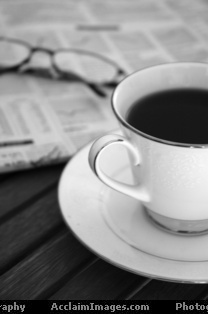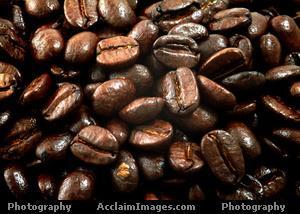
Caffeine

Caffeine is consumed by 80-90% of Americans on a daily basis, making it one of the most commonly used drugs in our society.
caf·feine or
caf·fein
n. A bitter white alkaloid often derived from tea or coffee and used
chiefly as a mild stimulant and in the treatment of certain kinds of headache.
|
When isolated in pure form, caffeine is a white crystalline powder that tastes very bitter but has no odor. |
|
Good Effects |
Bad Effects |
| Increases both alertness levels and attention spans | Raises blood pressure |
| A cup of coffee or tea, both containing large amounts of caffeine, are recommended to counter sleepliness for those driving long distances | Causes your stomach to produce more acid |
| Many caffeine containing beverages are known to contain antioxidants. Antioxidants have health benefits especially in heart health and cancer prevention | Irritates stomach lining |
| Reduces the concentration of histamines; therefore it may be useful to prevent allergic reactions | Makes digestion less effective by relaxing the muscles of your intestinal system |
| Helps people suffering with asthma | Its diuretic effect causes increased urination |
| Causes messages to be passed along your nervous system more quickly | Affects length and quality of sleep. Caffeine users suffer from sleep deprivation because their nervous system is too stimulated to allow them deep, restful or prolonged sleep. |
| Stimulates blood circulation | Caffeine nerves a jittery feeling with shaking hands, palpations and wobbliness in the legs |
| Stimulates your heart, respiratory system and central nervous system | Causes blood sugar, or blood glucose, to be realeased from storage through the effects of the adrenal hormones. |
| Stimulates the cortex of your brain, heightening the intensity of mental activity. This can result in a temporary feeling of alertness | The releasing of blood glucose does give you a temporary lift but requires your pancreas to overwork |
| Causes your adrenal glands to release their hormones into your bloodstream | You may get caffeine addiction which involves nervousness, irritability, agitaiton, headaches or ringing in the ears. |
Here is a list of popular food, beverages, and medications with their caffeine content in milligrams:
|
|
| Tea (5 oz Cup) | mg |
| 1 min. brew | 9-33 |
| 3 min. brew | 20-46 |
| instant | 12-28 |
| Chocolate | mg |
| 6 oz cup of hot cocoa | 2-8 |
| 6 oz cup of chocolate milk | 2-7 |
| 1 oz milk chocolate | 1-15 |
| Soft Drinks (12 oz can) | mg |
| Mountain Dew | 54.0 |
| Coca-Cola/Diet Coke | 45.6 |
| Shasta Cola | 44.4 |
| Dr. Pepper | 39.6 |
| Pepsi-Cola | 38.4 |
| Diet Pepsi | 36.0 |
| Stimulants | mg |
| No-doz tablets | 100 |
| Vivarin | 200 |
| Pain Releivers | mg |
| Anacin | 32 |
| Excedrin | 65 |
| Midol | 32 |
|
CAN YOU BECOME ADDICTED TO CAFFEINE? |
|
People often say they are
"addicted" to caffeine just like they may say they are "addicted" to
shopping. The term "addiction" actually refers to a strong dependence on a
drug characterized by severe withdrawal symptoms, tolerance to a given
dose and the loss of control or the need to consume more and more of the
substance at any cost. Addicts tend to exhibit anti-social behavior or
even commit crimes to perpetuate the abuse. Consumers of
caffeine-containing beverages do not fall into this category. The
Diagnostic and Statistical Manual for Mental Disorders (1994), a document
that characterizes various addictions, does not list caffeine as a
substance that causes addiction. According to the World Health
Organization, "There is no evidence whatsoever that caffeine use has even
remotely comparable physical and social consequences which are associated
with serious drugs of abuse." Many people notice mild withdrawal symptoms
such as headache, restlessness, and irritability when caffeine consumption
is halted suddenly. However, it can not be classified as an addiction but
rather a strong dependence on the drug.
|
Caffeine IS Legal
|
SLANG Caffeine does NOT have any slang. However, coffee, which
contains a large amount of caffeine does. "Cup of Joe" originated in The
U.S. Navy. The U.S. navy once served alcoholic beverages on board ships.
However, when Admiral Josephus "Joe" Daniels became Chief of Naval
Operations, he outlawed alcohol onboard ships, except for very special
occasions. Coffee then became the beverage of choice, hence the term "Cup
of Joe." |
|
Links to Diseases |
| In a 1986 study of 16,600 individuals published in the Journal of the National Cancer Institute found no relationship between coffee consumption and cancer risk. Even recent studies have shown that there is no data to support a link between caffeine consumption and cancer in humans. A worldwide investigation of 100,000 deaths due to breast cancer found no relationship between caffeine intake and the development of the disease. Research has also shown that caffeine intake is not a significant risk factor for osteoporosis, especially in women who consume adequate amounts of calcium. There is also only weak and inconsistent evidence that supports that links coffee consumption to the risk of coronary heart disease. There has also been some concern of the intake of caffeine for pregnant women. The FDA however, has stated that caffeine does not adversely affect reproduction in humans. The agency does advise that pregnant women consume caffeine in moderation |

|
Statistics |
| The highest OTC dosage of caffeine is in No-Doz, which is 200mg |
| Average caffeine consumption: 363.5mg in coffee drinkers, 107mg from former coffee drinkers, and 91mg from non coffee drinkers |
| Americans consume 45 million pounds of caffeine a year |
| 80-90% of Americans consume caffeine daily |
|
Caffeinated Soda Statistics |
| More than 15 billion gallons were sold in 2000 |
| That works out to at least one 12-ounce can per day for every man, woman and child |
| Fifty-six percent of 8-year-olds down soft drinks daily, and a third of teenage boys drink at least three cans of soda pop per day |
| Carbonated soda pop provides more added sugar in a typical 2-year-old toddler's diet than cookies, candies and ice cream combined |
| sold in 60 percent of all public and private
middle schools and high schools nationwide
|
| In a recent study at Carondelet Highschool, it was found that over 50% of the girls agreed that caffeine is the least dangerous drug. |
Sources:
http://coffeefaq.com/caffaq.html
http://faculty.washington.edu/chudler/caff.html